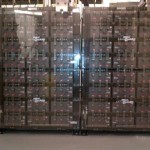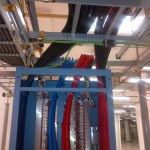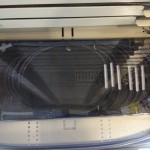Can You Hear Me Now? The Convergence of Traditional Wired Telecom and Wireless Telecom
With people using multiple wireless devices as their main means of communication the need to be “connected” all the time is more important than ever. While wireless service providers continue to upgrade and expand their networks at a rapid pace, a need has developed for building managers and businesses to implement solutions within their own areas. Currently there are two systems that can help meet this need: Small Cells and DAS (Distributed Antenna Systems).
What is a Small Cell?
A Small Cell (also known as a Picocell) is a self contained radio units which are usually mounted on a wall or ceiling that bring a wireless carriers service to the immediate area through a series of hand-offs. Small Cells are most commonly deployed in areas where there is a dead zone within a building. The Small Cell creates a “hot-spot” where coverage can be accessed via these small mounted radios.
What is a DAS (Distributed Antenna System)?
DAS was developed as a remedy to dead zones within buildings and small ares due to interference, terrain, etc. DAS is a network of strategically placed antennas that connect to a base station via coax or fiber which is then relayed/distributed back to the donor antenna. They are ideal for larger areas ( Malls, Hospitals, Schools, etc).
Which is better for my business?
The answer to this really depends on the need and functionality of your business. Small Cells are more ideal for a small business like a café, restaurant or store. They are quicker and cheaper to implement but require authorization from a specific mobile carrier and are fairly rigid in design. They are harder to manipulate to upgrade and adjust service area and require a power backup to run, their effectiveness is also diminished by interference with adjacent cell towers and other small cell networks. A DAS can be implemented on a larger scale (universities, hospitals, malls, tunnels) and combine several frequencies to serve multiple carriers (including the public safety frequency but require significant infrastructure so there fore can be more expensive and timely to roll out. End users are demanding accessibility to cellular data…It is as much as a draw as a happy hour in some instances, can you meet your customers demand?







